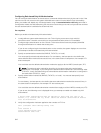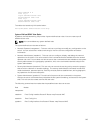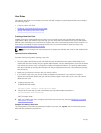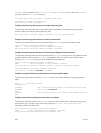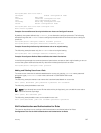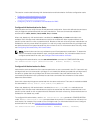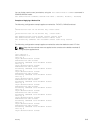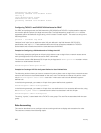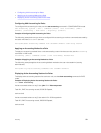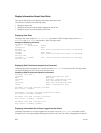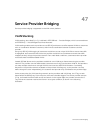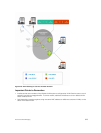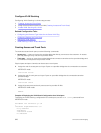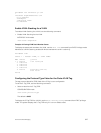
authorization exec ucraaa
accounting commands role netadmin ucraaa
line vty 9
login authentication ucraaa
authorization exec ucraaa
accounting commands role netadmin ucraaa
!
Configuring TACACS+ and RADIUS VSA Attributes for RBAC
For RBAC and privilege levels, the Dell Networking OS RADIUS and TACACS+ implementation supports
two vendor-specific options: privilege level and roles. The Dell Networking vendor-ID is 6027 and the
supported option has attribute of type string, which is titled “Force10-avpair”. The value is a string in the
following format:
protocol : attribute sep value
“attribute” and “value” are an attribute-value (AV) pair defined in the Dell Network OS TACACS+
specification, and “sep” is “=”. These attributes allow the full set of features available for TACACS+
authorization and are authorized with the same attributes for RADIUS.
Example for Configuring a VSA Attribute for a Privilege Level 15
The following example configures an AV pair which allows a user to login from a network access server
with a privilege level of 15, to have access to EXEC commands.
The format to create a Dell Network OS AV pair for privilege level is shell:priv-lvl=<number> where
number is a value between 0 and 15.
Force10-avpair= ”shell:priv-lvl=15“
Example for Creating a AVP Pair for System Defined or User-Defined Role
The following section shows you how to create an AV pair to allow a user to login from a network access
server to have access to commands based on the user’s role. The format to create an AV pair for a user
role is Force10-avpair= ”shell:role=<user-role>“ where user-role is a user defined or system-
defined role.
In the following example, you create an AV pair for a system-defined role, sysadmin.
Force10-avpair= "shell:role=sysadmin"
In the following example, you create an AV pair for a user-defined role. You must also define a role, using
the userrole myrole inherit command on the switch to associate it with this AV pair.
Force10-avpair= ”shell:role=myrole“
The string, “myrole”, is associated with a TACACS+ user group. The user IDs are associated with the user
group.
Role Accounting
This section describes how to configure role accounting and how to display active sessions for roles.
This sections consists of the following topics:
820
Security



